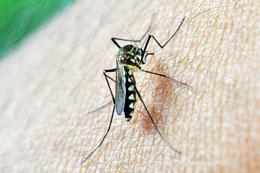"National alert" over increasing dengue cases

The Philippines has declared a "national dengue alert" in several regions of the Philippines due to "the rapidly increasing number of cases" in these areas.
From Jan. 1 to June 29, 2019, the Philippine Department of Health (DOH) said 106,630 dengue cases had been reported nationwide, an 85 percent increase from the 57,564 cases reported over the same period of last year, and at least 450 deaths were recorded.
The DOH disclosed among regions which have exceeded the epidemic threshold are Mimaropa, Western Visayas, Central Visayas, and Northern Mindanao.
"This is the first time that we're declaring a national alert. Because the objective is very clear. We want to raise awareness among the public and more importantly, in communities where signs of early dengue increases are evident," Health Secretary Francisco Duque said.
There is no national epidemic yet in the Philippines as the dengue cases are so far confined to these four regions, he added.
"We don't have a national epidemic. It's localized. There is no national epidemic but there is certainly regional," Duque said.
Duque said the DOH is closely monitoring other regions across the country for "exceeding the alert threshold."
In the Philippines, dengue cases have been observed to peak every three to four years.
"The last peak occurred in 2016. Given this pattern, the DOH expects an increase in cases this year," Duque said.
Dengue is a viral disease with no known vaccine or specific antibiotics. Effective surveillance helps in reducing cases and deaths if areas with clustering of cases are identified early.
Signs and symptoms of the disease are severe headache, pain behind the eyes, severe joint and muscle pain, fatigue, nausea, vomiting, and skin rashes.






